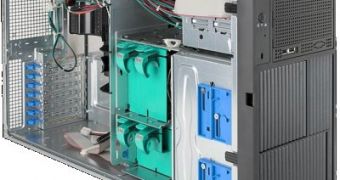Taking into account that this virtualization technology isn't that old, it has been accepted by the industry due to its advantages. Once it was put into applications which consumers could test and see whether or not they're any good, it literally skyrocketed. Now, processor manufacturers integrate the technology into their products and we've seen a special increase in the server market.
Thinking about running two or more separate operating systems on the same hardware, with separate hardware resources being used by each operating system and the possibility of having one operating system crash while the other one still continues to function properly is a major breakthrough. Software solutions have been developed for the same purpose, but there is one downfall-taking most of a system's resources while in operating mode. And if, by any chance, you limit the software's reach so that it uses less hardware resources, it runs at a decreased level of performance.
According to IDC, due to the increased usage of virtualization technology and multicore processors, their forecast regarding the number of server systems that are going to be sold in the second half of the decade has dropped in number. Not surprisingly, Wmware is in the lead when it comes to virtualization software, followed by the open-source alternative called Xen.
"Overall, x86 (server) shipments that were once projected to increase 61 percent by 2010 are now facing just 39 percent growth during that same period," IDC said. This forecast is trying to predict what direction the market's going to take in the future, the result being taken into consideration by big server manufacturers like Intel, AMD and IBM. Having software virtualization is also an interesting thing to try; basically, it can accurately reproduce another virtual computer, and has been software designers' favorite testing tool since it appeared on the market.

 14 DAY TRIAL //
14 DAY TRIAL //